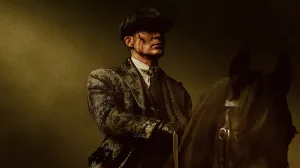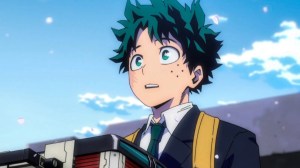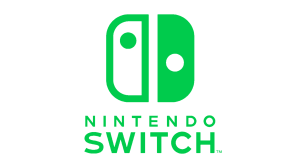Kieron Gillen and Stephanie Hans have reunited for a dark fantasy series rooted in the world of tabletop gaming.
Videos by ComicBook.com
This week, Image Comics released the first issue of DIE, a new series about a group of teens who disappear into a fantasy world while playing an RPG. Scarred by the experience, the former friends reunite in the present day after one receives a chilling reminder from their doomed game.
“It’s a book about what fantasy is, and what’s it for,” Gillen said in an email interview with ComicBook.com. “It goes to dark places. It goes to utterly necessary places. I just want to be honest about this stuff.”

Gillen first conceived of DIE while palling around with comic creator Ray Fawkes and Gillen’s Wicked + The Divine co-conspirator Jamie McKelvie at San Diego Comic-Con in 2016. Over ice creams, Gillen asked about what happened to the kids from the 1980s Dungeons & Dragons cartoon, a series in which a group of kids from the real world got sucked into a fantasy land. “We joked around it a bit – historically, they escaped in the last episode which they never recorded – and just thought of these people who’d survived a D&D game gone wild, now well into their adulthood,” Gillen said.
“It stuck in my head all day,” Gillen continued. “I chewed it over, had some more ideas, and by 8PM I burst spontaneously into tears during dinner when I realised what the story was about, and it instantly jumped up to the top of the list of Stories I Had To Tell Immediately. I threw the other story in the bin, pitched DIE at Stephanie, and started all the research I needed to do.”
DIE is both a commentary on escapism and an examination of how people interact with fantasy and RPGs. While other comics might celebrate escapism (after all, so much of the comics industry is built around escapism), the first issue of DIE hints at a more dangerous side, one where people emerge scarred by the experience.

Gillen compared DIE‘s relationship to fantasy and escapism with how The Wicked + The Divine both critiques and celebrates artistry in the modern era. “There is certainly part of me wondering whether I disappeared into a fantasy world at the age of 16 and never came out,” Gillen said. “And how that influenced me, for better or for worse.”
When speaking to Gillen and Hans via email about their experience with fantasy games, it was clear that the two are both fans. Gillen was a video game critic and has dropped in and out of tabletop RPGs his whole life, while Hans was an avid fan of the Final Fantasy series, Baldur’s Gate, and Warhammer. Both also recognize the allure in tabletop RPGs, especially with their resurgence in the modern day.
“I think people need to reconnect with real people,” Hans said. “The world now holds little mystery, it shrinks. I think people need mystery, they need to know there is more than that. Playing tabletop RPGs is a way to connect with like-minded souls. And to bring some mystery back to the world, I guess.”
“The classic reason why tabletop and board games are more culturally present is because the desire to connect with people in material spaces with the fetishism of real objects,” Gillen added. “And then, oddly, imagine you’re somewhere else entirely.”

While the world of DIE might be fictional, the core cast feels very real and complex. We see this group of six friends both as teenagers and adults, and see how they’ve simultaneously grown up and stayed the same when they reconnect. “The aim was to make a social group which felt entirely authentic,” Gillen said. “It’s not a generalised group of teenagers and adults. These are specific people, whose internal lives and drives are going to carry the whole book.”
“I have a sort of deep connection with the characters I draw,” Hans said when asked how she found a way to show both consistency and change when drawing the characters in different time periods and worlds. “I need to feel their reality. They need to be human when I think about them, I don’t think about their design, I only think about who they are and the small things that make them tangible, their inner thoughts, their body language, their very own melody.” Hans added that she’s old enough to have seen how certain types of people grew older, and it’s reflected in DIE.
To create the world of DIE, Gillen created an entirely new fantasy world. Gillen told ComicBook.com that he relied on Hans’ art to help make his fantasy world feel like its own place — “with that sad romance” found so often in Hans’ haunting work — but familiar to readers.
“I wanted to be deconstructionary (As in, the world takes apart some common RPG tropes) while also reconstructionary (As in, creating a whole fantasy that is seductive and enchanting),” Gillen said of his fantasy world. “I wanted character types that could be commentary on your cleric and paladin and the rest… while having the potential to operate by themselves as their own iconic sense.” You see some of that in the first issue, as characters assume familiar fantasy archetypes like the bard or the sorcerer, but already feel different at first glance.

Intriguingly, Gillen also developed an entirely new RPG system for DIE, developed in parallel with the creation of the comic. “This has been an interesting process,” Gillen said of his dual projects. “As there’s definitely been times when each has felt like the ‘lead’ project. That was a teething process — it’s now metabolized into its own thing, with the two feeding between each others. Some ideas came from one and crossed over, and vice versa.” Gillen plans to release the RPG when the first DIE trade comes out, mostly because it contains spoilers for the first arc.
Gillen ended the interview by noting that DIE‘s aim is to make people think and feel about their relationship with art and what they use it for, and to make people realize that Hans is a superstar. “What we use our fantasies for, how we get attached to them, and what that even means is certainly built into the book,” he said.
DIE #1 from Image Comics is available now.








